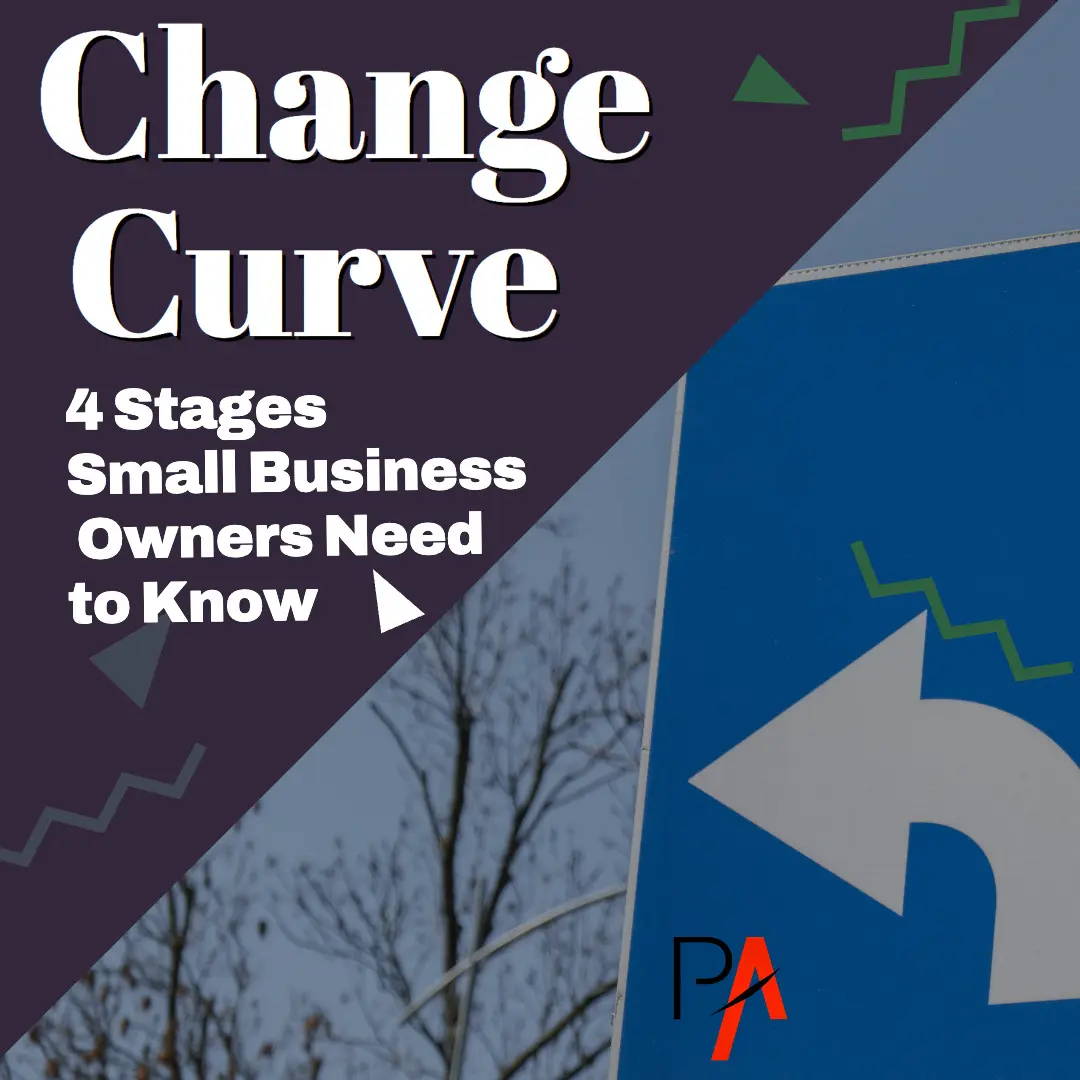The Change Curve is a helpful tool for small businesses to understand each employee’s stages of personal transition. Kubler Ross developed this model to explain the grieving process (The kübler ross change curve = Shock and Denial, Anger and Fear, Acceptance, and Commitment).
This kübler-ross change curve model helps small business owners predict how employees will react to a change and advises how to help and support the employees through their personal transitions.
An organization does not change just because of new systems or processes. It changes because people within the organization adapt and change. Only when people within the organization make their transitions can the organization benefit from the change.
The Change Curve Model
The ‘Change Curve’ model helps small business owners understand the stages of personal transition and organizational change. This model comprises four stages employees undergo as they adjust to a change.
Stage – 1: Shock and denial
Stage – 2: Anger and fear
Stage – 3: Acceptance
Stage – 4: Commitment
What is the change curve and how do you respond?
Stage – 1: Shock and denial
This is the first reaction that small business owners notice in their employees – they react to the challenges to the status quo. This reaction is seen more within experienced and established employees because these employees are indifferent to new systems and procedures. They feel uncomfortable because of the fear of the unknown, fear of doing something wrong, and lack of information. They feel threatened and fear failure. Under these circumstances, they usually take it as friction rather than an opportunity.
What do the employees need here?
Employees may experience this stage multiple times. To get over it, employees need information, understand what is happening in the organization, and know how to get help from the organization.
Note: This stage particularly affects those employees who have yet to experience any significant change before.
What should the organization do?
At this stage, it is the responsibility of the owners to communicate with their employees and educate them about the benefits they will gain by adapting to new systems – personally and professionally. Remember to avoid overwhelming your employees by flooding them with loads of information at a time, or they may even need more clarification.
Stage – 2: Anger and fear
This is the second stage that is seen in the employees. Employees react to a change and start expressing anger, concern, resentment, or fear. They may resist the change actively or passively. This stage could be dangerous, and if the organization does not manage it carefully, it might result in chaos.
What should the organization do?
At this stage, the small business owner should handle employees’ objections carefully. Since the reaction to change is personal and emotional, it’s impossible to prevent it from happening. Therefore, the organization should address the employees’ experience and iron out the issues as early as possible.
Note: As long as employees remain at stage – 2 of the Change Curve by escaping progress, the change will be unsuccessful.
Stage – 3: Acceptance
This is a turning point for employees and the organization because they have stopped focusing on what they have lost and started accepting changes. They begin exploring differences and get an accurate idea of what’s good and what’s not and how to adjust themselves accordingly.
What should the organization do?
This stage is critical – it takes time for employees to learn and accept things. Therefore, don’t expect your employees to be 100% productive during this stage. Give them time so that they understand and explore without much pressure.
Stage – 4: Commitment
The employees will be committed to analyzing and embracing the change at this stage. They start rebuilding the way they work; this is the stage at which the organization begins to see the benefits of the change.
Benefits of the change
At this stage, the organization will see the benefits of putting in effort for their employees’ welfare when they are grieving. The positive effects of the Change Curve are now more evident through its productivity and profit.
What is the change curve for employees?
The Change Curve is an effective model for small business owners while managing employees. Locating an employee on the change curve will help the business owner decide how to communicate information to employees effectively and know what kind of support they require. This helps them take necessary measures and protect the business and the employees. Discover more about the kübler-ross change curve.





One Reply to “Change Curve – 4 Stages Small Business Owners Need to Know”
Comments are closed.